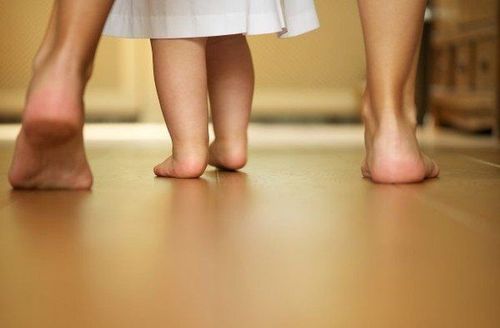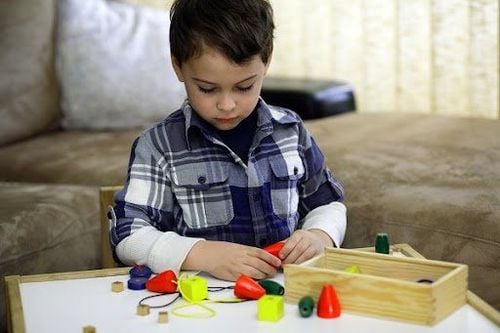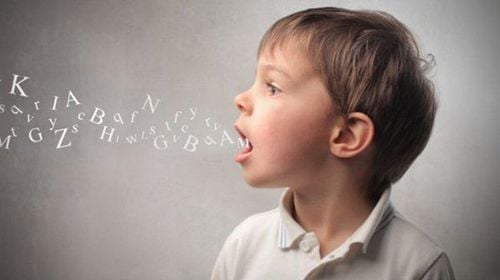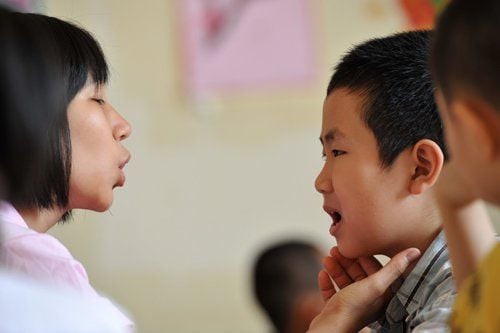This is an automatically translated article.
Post by MSc Tran Ngoc Ly - Psychologist - Unit of Regenerative Medicine Clinic and Educational Psychology - Vinmec Times City International General Hospital
Refers to the definition of imitation, this term comes from biology, to refer to the phenomenon of an organism having the same or similar characteristics as another organism, in order to protect itself or both. Mimicry is the result of evolution, by natural selection, over a long period of time.
1. The Role of Imitation In psychology, imitation is a process by which an individual copies the behaviors he or she sees/hears from others. Imitation plays a significant role in human life, in the development and learning of each individual. In young children, especially preschool children and young children, through imitation, behavioral standards, self-service skills, and objective action are formed and maintained. In older age, or adulthood, the mimicry mechanism still takes place, but possibly in different ways. Mechanisms of imitation in psychology can be conscious or unconscious, absolute or partial, creative or pure, voluntary or compulsive
Especially at a young age, under 6 years old learning the world around, through what you see/hear, is the period when children form their personality, the stage when children learn to express themselves, absorb knowledge of humanity... The process of imitation is widely applied in children's lives. Imitation helps children perceive and learn behaviors quickly, helping children develop their brains. This is especially true in an environment where many positive things, many good behaviors take place around the child.

2. Aspects that children often imitate 2.1. Sound Sound is a mechanical oscillation of frequencies that can be heard by the human ear. Sound includes both noise and music. There are some types of sounds that children can easily imitate and enjoy when imitating such as:
+ Engine sounds of all kinds of vehicles: the buzzing of airplanes, the hum of motorbikes, the sound of motorbikes, the glass of bicycle bells, the beep beep of car horns...
+ The sounds of animals: ducks clack, roosters crow ooh o o o, hens squeal "cluck", dogs barking “woof woof”, cat meowing “meow”...
+ Sound of musical instruments: tick, tote, barrel...
+ Sound of water: heavy rain , the sound of lightning, the sound of running water, the sound of running water, the sound of rain falling from the sky, the sound of things
+ The sound of objects: the lid clatters, the ball hits the floor clack
+ Music can be the melody of songs, can be expressed by sounds or single words...
2.2. Language One of the prime examples of imitation is language learning in young children. Under the age of 6, children learn all the words and words of adults and those around them. From the time children learn to speak, listen to simple sounds, come from single words, develop new vocabulary, make short sentences, make complex sentences, ask questions, apply language in different situations... to practice presenting, giving speeches in front of a large number of people, or criticizing ideas to protect their own views... all need imitation.
At the stage of children under 4 years old, children almost completely absorb the words expressed by the people around them, but sometimes they learn unconsciously but do not understand the meaning of words. The environment for children to learn language at this stage includes: family members, friends, neighbors, classmates, teachers, and other people young people meet when participating in and other social activities. It is easy to see that there are some children who mispronounce the letters "l" and "n" because people around them also pronounce them the same. Or they may use a few local words they learned from someone else. Some children may talk blankly, or speak loudly to others, which children learn from interacting with others. Besides, when adults talk regularly with children, let children express their opinions, often ask questions and wait for children to answer... then children can develop language in a positive way. It is not uncommon for children to be confident in situations and start conversations with others with questions such as: "Hello, Grandpa, where are you going?" either say “Dogs, dogs, I'm afraid of dogs” or pretend to call their parents “Hey go get me some clothes” or the child can read/sung very long songs/poems/stories. ... Or it is easy to see, the importance of imitation when it is necessary to correct the child's lisp, or when teaching the child to say thank you, to say love to others.
At this early stage, children do not completely imitate every language they speak, but copying takes place in 90% of situations in daily activities, and with the built-in vocabulary, and self-study of children. themselves, children can develop into more diverse sentence patterns. The children continue to learn from each other these ways of talking.

2.3. Facial expressions, gestures In this aspect, children from 4 months old, have imitated basic facial expressions such as mimicking crying, laughing, grimacing, making bad face... when guided by adults. By about 9 - 10 months, these gestures have become more proficient. One gesture that children learn early and most clearly is pointing – to answer an adult's question, to express their desire, to attract the attention of others, to show their interest. By about 18 months, children can already learn to shake their head, glare, smile shyly, face when excited or angry, how to sway their body, shake their head when happy.. A little older, from the age of 2 onwards, to about 3-4 years old, the child's charisma when talking, the way to use gestures and gestures to express their wishes has been shown very clearly.. . and the influence from adults is not small, even the images of adults can be seen in those situations.
2.4. Acting with objects One of the easiest things children can imitate is working with objects: from how to reach for things, how to hold things in your hand, how to stack wooden blocks, how to hold crayons, how to hold scissors ... to how to build tall buildings from lego, how to thread beads well, how to thread rings.... These are activities of the fine motor group, and many children imitate unconsciously, without needing too much. having to concentrate or be conscious. As children get older, activities with objects need to be more complicated, such as holding a pen correctly, using the correct function of household objects, helping parents with housework.... will need to use imitation and learning mechanisms to perform well.
2.5. Activities or body movements Activities such as sitting, walking, standing up, holding hands to climb... of children under one year old are indispensable for children to imitate adults. According to the development of the age, at each stage, the child will have a need for movement and can self-develop motor development milestones. Imitation helps children perform those activities quickly and quickly. Other physical activities such as swaying to music, dancing with friends or TV programs, yoga movements, martial arts movements... are also imitated by children and adults a lot. .. Later, even when learning difficult movements, such as adult yoga, ballet, or gymnastics movements... it is also necessary to imitate
2.6. Sources that children can learn, imitate Children can imitate from friends in class, from friends in the neighborhood, from teachers, from family members (this is the object of greatest influence when young children). In addition, children can also imitate when they see objects: the robots walking, the way the car is moving... Or from movies on TV, youtube: dance songs on TV, talking and words language of cartoon characters, activities in daily life...
3. Ways to stimulate imitation of autistic children With well-developed children, children can find what they like and imitate them, without much outside influence. But children with autism often follow only a few activities that they enjoy, lack of an imitation mechanism, or lack of need to imitate, which will cause a child to lose a learning channel. Parents can stimulate imitation in their children in the following ways:
Break down activities to ease the child's current level, like dressing, which can be broken down into steps (understood, each sleeve, pull down the shirt....) and repeat each small step for the child to observe and follow Create fun activities that match the child's interests: Can be applied to games play social interaction such as chi chi, scissors, scissors... with facial expressions/vocals/body sway... to keep children interested and play games Perform repetitive activities over and over for children to remember and perform Model fun activities that children enjoy and look forward to: for example by saying a familiar stage and pausing to wait for the child to continue singing Adults actively imitate activities the activity the child is playing and waiting for the child to imitate the activity Interrupting the rhythm of play – specifically stopping during play, or changing the intensity to create enjoyment for the child, can be an example of how to play When walking, adults can tap quickly, slow down and then stop, and wait for the child to take the next steps. 4. Some things to note in the process of learning and imitating children Imitation process can take place consciously or unconsciously. Conscious imitation often takes place during learning, with guidance and attention from children. But oftentimes, children look at other people's actions and inadvertently repeat them - and without realizing it - so there can be bad behaviors: throwing trash or spitting indiscriminately, swearing, arguing loudly. language, hitting others... In this, children can learn from friends or family members themselves. Therefore, parents need to pay attention to observe children, so that they can adjust when children behave inappropriately. Or adjust their own behavior so as not to affect the child.
Watching TV, phone or computer programs, has a positive side that helps children learn how to live, how to talk, how to play from many different sources that are practically inaccessible. Besides, there are also many details that make children mistakenly think and perform wrongly, leading to life-threatening danger. For example, there have been cases where children watched a scene with a rope tied around their neck on TV, or a flying scene on a balcony and tried to do it too, leading to unfortunate situations. Therefore, supervision is always required when children watch and imitate these activities.
Imitation is an instinctive mechanism of every human being, taking place most strongly in children under 3 years of age, so parents always need to observe and create a positive environment and create conditions for children to discover and act in the most appropriate way.
Please dial HOTLINE for more information or register for an appointment HERE. Download MyVinmec app to make appointments faster and to manage your bookings easily.














